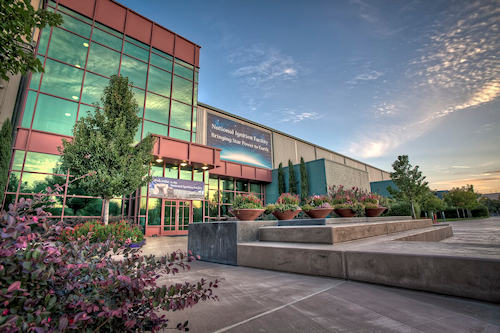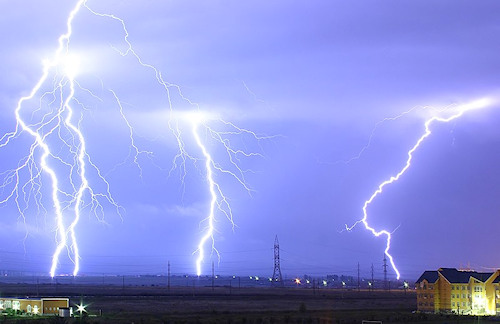We must be positive, once again study and application lead to concrete results despite many detractors: in the energy field for the third time, the third positive result was repeated by the National Ignition Facility (NIF) at Lawrence Livermore National Laboratory, California, not designed as a power plant but to recreate and study the reactions that occur during thermonuclear explosions.
The Laboratory currently studies and designs systems for the production of nuclear energy by fusion, a futuristic technology that is believed to be able to solve most of the planet's energy problems, producing almost unlimited quantities of energy without greenhouse gas emissions with negligible production. of radioactive waste.
In recent decades, NIF researchers have been studying to achieve the nuclear fusion, one of the most challenging objectives of all applied science in the energy field. In reality, a first significant result had been achieved 5 December 2022, albeit with limited energy production. Still too little for cost-effective exploitation but a milestone that made it clear that we were on the right path.
 Let's take a small step back, fusion ignition occurs when the thermal power of the alpha particles produced by nuclear fusion reactions exceeds the cooling effects of losses linked for example to X-ray emissions and expansion by implosion. When enough of these particles are absorbed into the high-density fuel layer, a wave of fusion reactions is generated and propagates into the cold fuel, a mixture of deuterium and tritium (two isotopes of hydrogen) that surrounds the point heat. When energy deposition by particles contributes more than 50% to fuel heating, a self-sustaining feedback loop is generated that results in explosive amplification of energy production.
Let's take a small step back, fusion ignition occurs when the thermal power of the alpha particles produced by nuclear fusion reactions exceeds the cooling effects of losses linked for example to X-ray emissions and expansion by implosion. When enough of these particles are absorbed into the high-density fuel layer, a wave of fusion reactions is generated and propagates into the cold fuel, a mixture of deuterium and tritium (two isotopes of hydrogen) that surrounds the point heat. When energy deposition by particles contributes more than 50% to fuel heating, a self-sustaining feedback loop is generated that results in explosive amplification of energy production.
In simple words, a nuclear fusion reactor therefore works as an energy amplifier and the gain obtained is given by the ratio between the energy produced by the fusion reaction and that absorbed by the fuel which is triggered by focused high-energy laser beams. inside a small golden cylinder, called cavity, which contains the fuel sphere. This method, called indirect, exploits the X-rays produced by the interaction between the laser and thecavity to compress the fuel sphere, ensuring better compression symmetry than the direct approach.
It must be understood that the difficulty is also linked to the fuel used which is in the plasma state, in simple words: an ionized gas made up of a set of electrons and ions and globally neutral (i.e. whose total electric charge is zero).
 Plasma is considered as the fourth state of matter, which is therefore distinguished from the solid, liquid and gaseous states, while the term “ionized” indicates that a fairly large fraction of electrons is stripped from the respective atoms. It also exists in nature on Earth although relatively rare (lightning and aurora borealis), but in the Universe it constitutes more than 99% of known matter (stars are in the form of plasma).
Plasma is considered as the fourth state of matter, which is therefore distinguished from the solid, liquid and gaseous states, while the term “ionized” indicates that a fairly large fraction of electrons is stripped from the respective atoms. It also exists in nature on Earth although relatively rare (lightning and aurora borealis), but in the Universe it constitutes more than 99% of known matter (stars are in the form of plasma).
Another difficulty is that the fuel to produce energy must be maintained at a sufficiently high density and for a sufficiently long time.
The first exciting result was obtained with the experiment of 5 December 2022, when the NIF had exceeded the ignition threshold producing 3,15 megajoules (MJ) of fusion energy using 2,05 MJ of laser energy.
To understand the laser "trigger" power, the NIF uses 192 laser beams capable of releasing on the target the same instantaneous power required on average by the entire American electricity grid.
In fact, the July 30 2023, the NIF laser always applying 2,05 MJ of energy to the target, obtained 3,88 MJ of energy production. The experiment was repeated the8 October 2023 and for the third time the NIF achieved ignition using less laser energy (1,9 MJ) producing a yield of less than 2,4 MJ. A few days later, the 30 October 2023, the NIF set a new record, using a larger amount of ignition energy for the first time (2,2 MJ) and achieving 3,4 MJ of fusion energy, the second highest neutron production ever achieved.
An important step forward but, although a net energy gain has been achieved, building a nuclear fusion power plant will still take a long time. Certainly the successes that occurred in 2023 have disavowed those who considered the exploitation of nuclear energy by fusion to be a chimera; detractors relied on the assumption that it would be impossible to achieve the level of precision needed with lasers to ignite the fuel which in turn had to be maintained in the necessary physical state.
The results are now encouraging and - although it will still take about ten years to be able to use this clean and sustainable energy - we must continue to invest in training engineers and researchers who, with their commitment, will be able to ensure a better future for everyone.
(article originally published on https://www.ocean4future.org)
Image: Lawrence Livermore National Laboratory / web












